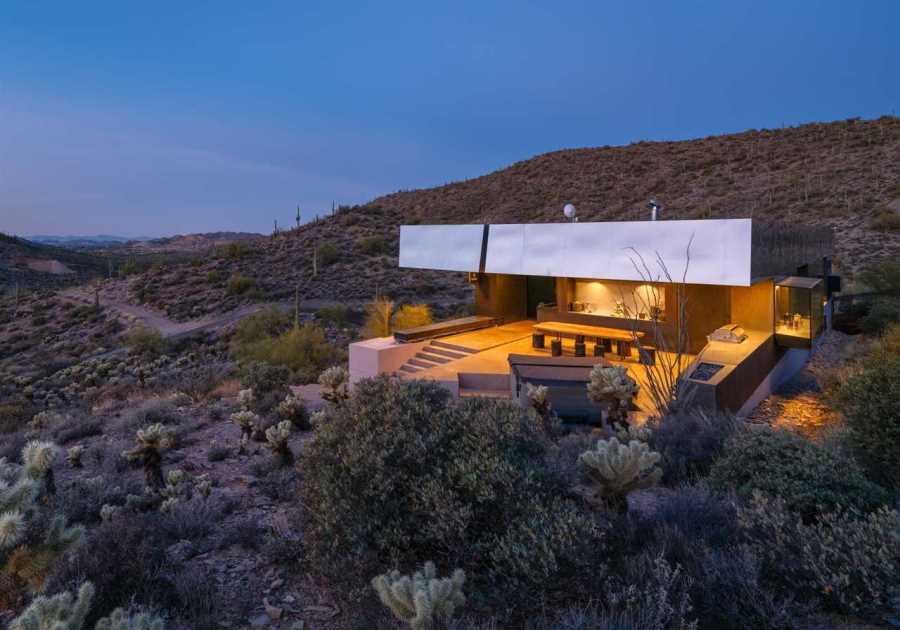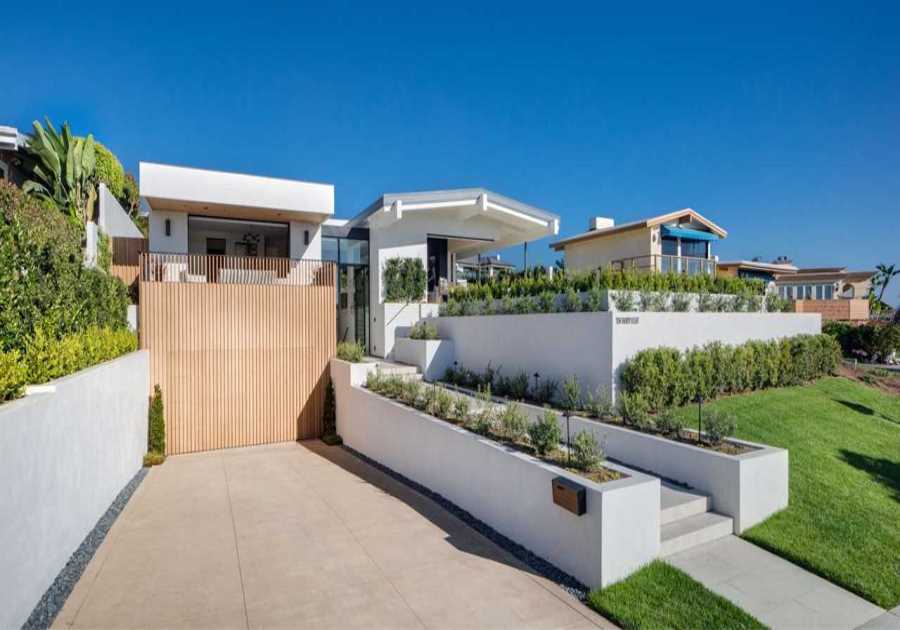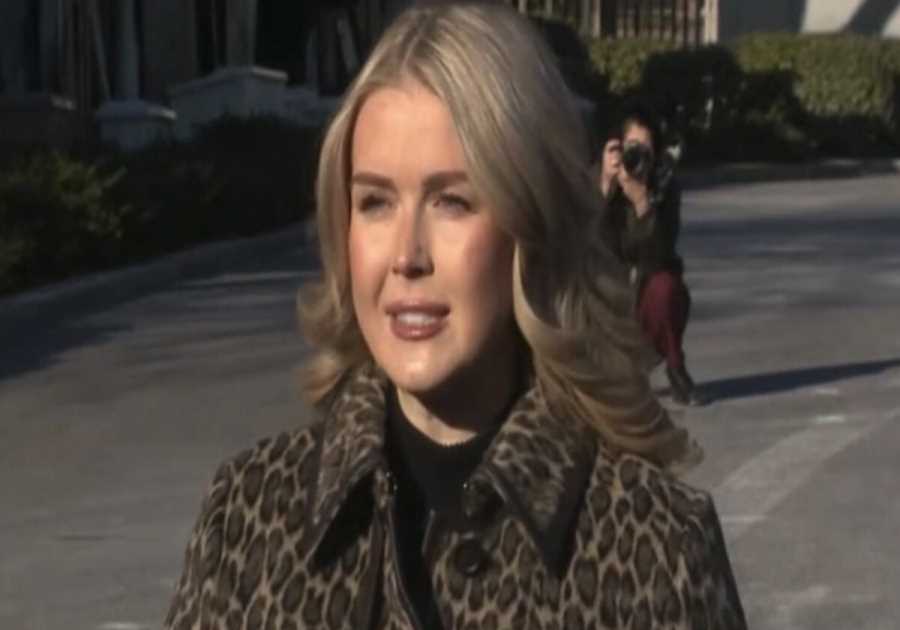The Academy Award winner drew inspiration from Mesoamerican architecture, East African fishing villages, and Zaha Hadid works to devise the kingdoms of Talokan and Wakanda for ‘Wakanda Forever.’
Throughout her childhood, Hannah Beachler had a recurring question for her architect father. "I’d say to him, ‘Dad, I want you to design the house that I live in when I’m older,’" she says. "He would always tell me, ‘I can’t design that until I understand where it is; until I understand the land it’s going to sit on.’ Being young, I was like, ‘You really won’t design me a house?’ but as I’ve gotten older, I’ve come to understand what he meant: You can’t see anything until you understand where it lives."
It’s a lesson that Beachler has clearly taken to heart in her work as a production designer, crafting the look of movies like Creed and Moonlight, as well as projects like Beyoncé’s Black Is King. Beachler is no doubt most famous for shaping the on-screen world of Wakanda for Marvel’s 2018 film Black Panther, a painstaking process for which she won an Academy Award (and made history in the process). Now, she’s returned to the fictional East African nation for Black Panther: Wakanda Forever, devising not only new parts of the vibranium-rich utopia, but also the underwater kingdom of Talokan.
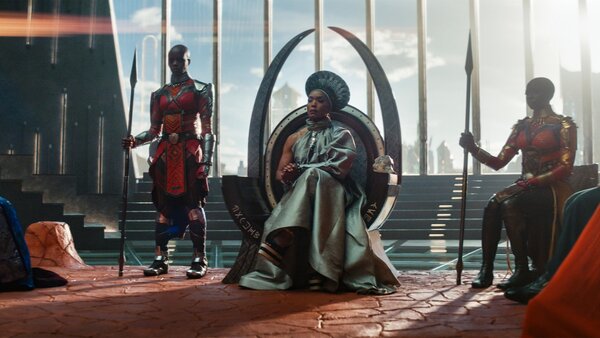
Production designer Hannah Beachler, who won an Academy Award for her work on the 2018 film Black Panther, devised Wakanda and the underwater kingdom of Talokan for the sequel.
Courtesy of © Disney
To create both Wakanda and Talokan, the admittedly "very detail-oriented" Beachler put together two location bibles, each hundreds of pages long. "When you’re developing a civilization," she explains, "You have to think, ‘Where do we start?’ because you can’t create a country in a vacuum." For a place like Wakanda, that meant drawing up not only a map of the country and its capital, but also descriptions of each of its districts, tribes, and vernaculars, a breakdown of regional architecture styles both in real-life Africa and fictional Wakanda, migratory maps and rationales, and a history of the discovery and development of vibranium (a rare metal with energy-manipulating properties that exists in the Marvel universe). "It’s really a breakdown of the country’s history, folklore, and legends," Beachler says, adding that it was also important to her and director Ryan Coogler to think about how Wakandans lived in harmony with nature.
That same kind of attention to detail went into conceiving Talokan, a fictional civilization in the Atlantic Ocean based on Tlālōcān, one of the underworld realms in the Aztec codices. To craft the world of the Talokanil people, Beachler had to learn not only just about everything about post-classical Mesoamerican history and architecture, but also study the effects of water pressure on buildings and materials, given that Talokan is supposed to sit about 12,000 feet below sea level. "That was a hard one, because living underwater is something that humans don’t know very much about at all," she says. "I had to think about the biological materials that would be found in the Puerto Rico Trench [where the Talokanil settled], but also how the people would have utilized them and how those materials would have worked in tandem with animal life. It couldn’t just all be stone, so, like, were they using algae or were they bringing materials from the surface?"
In developing Talokan’s visual look, Beachler says she also gave the undersea kingdom a sort of backstory. Because it’s mentioned in the film that the Talokanil spent about 200 years living in the Gulf of Mexico before settling in the trench, she says that meant she had to look at how their traditional Mayan architecture would have changed in that time, and how it might have evolved from the "more traditional look" to what we see in Wakanda Forever. There are still nods to Mayan temples and spaces for games like Pitz, but Beachler also had to consider how the Talokanil would have used vibranium to harness the power of the sun, creating a massive reflective orb that Wakanda’s Shuri (Letitia Wright) marvels at in the film. Beachler also paid tribute to ancient Mayan storytelling traditions with set pieces like the Megalodon throne of Talokan’s leader, Namor (Tenoch Huerta Mejía), and massive red murals that tell his backstory. "Because he’s the Serpent God," Beachler says, she even thought to have "eels that go through the hieroglyphs on the wall," explaining that the sea snakes were using them as a kind of coral reef—albeit one covered in thick red algae.
"I do a lot of research," Beachler says. "But the fun part for me is turning all of those deep dives into a physical place." With eight months to prep the second Black Panther film, Beachler started thinking not just about how to expand the world of Wakanda, but specifically how she wanted to pay tribute to its strong matriarchal society. Part of that came in the development of the more low-slung, eco-incorporating River Village, where Aneka (Michaela Coel) lives in the film. Because the River people "don’t really use technology in the same way as they do in Golden City," Beachler says, this setting is "much slower, much more about agriculture, and much more about following traditional ways."
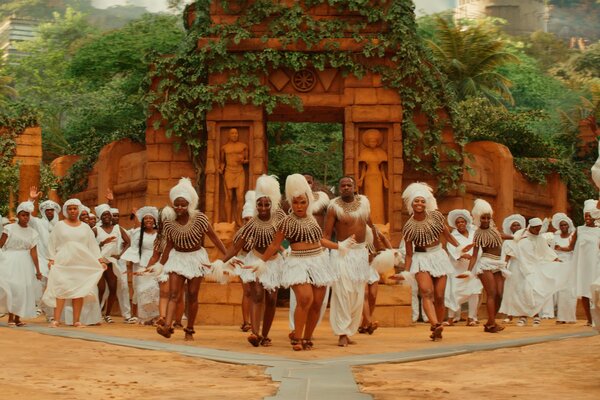
Beachler put together two location bibles for Black Panther: Wakanda Forever, each hundreds of pages long.
Courtesy of © Disney
Beachler says her take on the River Village references real Congo River fishermen and tribes along Ethiopia’s Omo Valley, but also designs by late architect Zaha Hadid, who she cites as a major influence on all her work. "When you’re looking at the walkway in that little town and the way that it curves through and around buildings, it’s very much influenced by her," Beachler says. Citing Hadid’s uncanny ability to blend the natural and the "not so natural," the production designer points to other nods to Hadid’s work throughout Wakanda, from what she describes as the "naturalistic rondavel skyscrapers" with reed tops in Golden City, to the way that vibranium walkways slide through them "kind of like they’re growing through a tree." The buildings are "integrating themselves into the nature around them," Beachler says, adding that she always aimed to create intimate spaces in even the most vast interiors, not unlike Hadid’s work with Rome’s MAXXI or the Dongdaemun Design Plaza in Seoul. "Those buildings are voluptuous and feminine, but there’s a strength to them. As ginormous as they are, they feel intimate."
"I was really invigorated by the idea of Wakanda as this marrying of two things to create something symbiotic," Beachler says. "Instead of humans infiltrating a place and decimating it because we need a bigger parking lot, it’s about how we can lend our sensibilities to the ridge of a mountaintop. It’s the idea of integrating the tradition of a particular tribe into a futuristic world. That, to me, is very much what Zaha Hadid brought to the places where her architecture lives: The idea that a building can be beautiful and it can be healthy. That’s what I wanted for Wakanda."
Top photo courtesy of © Disney.
Related Reading:
Queen of the Curve: 18 Influential Works by Zaha Hadid
The Addams Family Aesthetic Has Been Done and Redone. How Do You Do It Again?
Read More
By: Marah Eakin
Title: How ‘Black Panther’ Production Designer Hannah Beachler Created the Sequel’s Underwater World
Sourced From: www.dwell.com/article/how-black-panther-production-designer-hannah-beachler-created-wakanda-and-talokan-for-wakanda-forever-2f232772
Published Date: Wed, 30 Nov 2022 13:13:20 GMT
.png)
